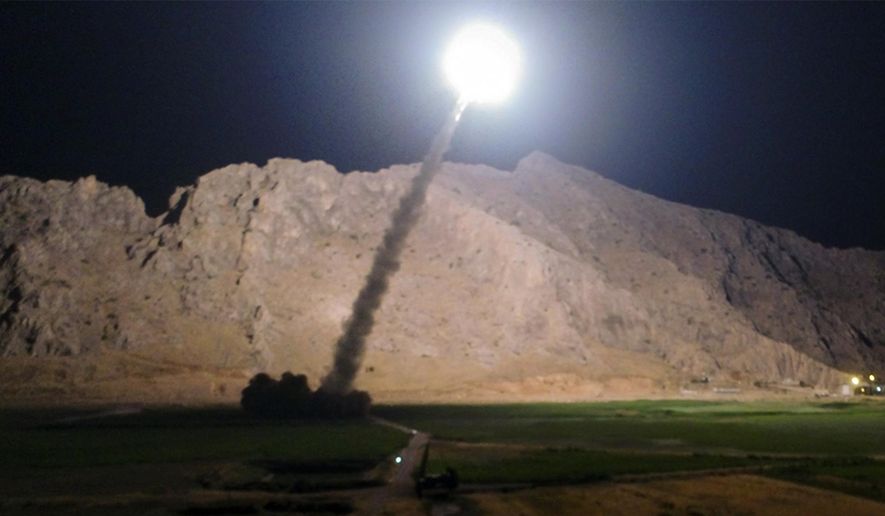Tehran’s much-heralded ballistic missile strike against Islamic State targets in Syria came up short, with most of the Iranian missiles either missing their marks inside the terror group’s haven in Deir-e-Zour, or missing Syria altogether and landing inside Iraqi territory.
Of the seven Zulfiqar-class midrange ballistic missiles fired at safe havens and redoubts belonging to the terror group known as ISIS or ISIL in Deir-e-Zour, only two hit their intended targets, Haaretz reported. Two of the rockets landed inside Syria, miles from their intended targets, while the remaining three landed in Iraq, according to the report citing Israeli military sources.
At the time of the launch, Tehran lauded the strikes saying they had destroyed “headquarters and gathering centers of Takfiri terrorists supporting and building car bombs,” said a statement by the hardline Iranian Revolutionary Guard Corps, broadcast by Tasnim news Sunday.
A number of the terror group’s leaders — reportedly including ISIS emir Abu Bakr al-Baghdadi — have fled to to Deir-e-zour, Madan and other areas in the Euphrates River Valley ahead of the Raqqa offensive. The failure of the Iranian missile strikes has cast a pall over the first ever military action taken by Tehran against ISIS.
The unprecedented missile strikes against ISIS by Iran took place days after the terror group claimed responsibility for a series of spectacular attacks in the Iranian capital.
The series of shootings and suicide bombings that struck the Iranian parliament and the shrine dedicated to Ayatollah Ruhollah Khomeini in Tehran by the terror group on June 7 left 18 dead, 42 wounded and roiled the Middle East. The attacks were the first time ISIS carried out an operation inside the Iranian capital.
• Carlo Muñoz can be reached at cmunoz@washingtontimes.com.




Please read our comment policy before commenting.